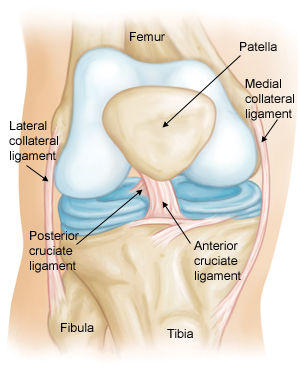Torn Anterior Cruciate Ligament (ACL) – Lachman Test
Lachman Test
Identifying an anterior cruciate ligament (ACL) tear
The Lachman test is pretty easy to explain to someone but difficult to understand without some kind of example.

A plastic model of the knee helps in understanding but an actual patient is better. Unfortunately, there isn’t always one available during your “teaching moment.”
A great alternative is a good teacher and a cooperative patient on a video – like this one.
The anterior cruciate ligament (ACL) is hidden inside the knee joint and is diagnosed by performing the Lachman Test during a thorough physical exam – like this one by a pediatric orthopedist.
As you watch him explain the terms: “medial” means “inside or middle“; “lateral” means “outside“; “anterior” means “to the front” and “posterior” means “to the rear.”
There are two “collateral” ligments – one on each of the medial and lateral sides of the knee which prevent right and left scissoring of the lower leg outward and inward.
And there are two “cruciate” ligments – the anterior and posterior, in the middle of the joint which prevent the lower leg from slipping forward or backward out of the joint.
There are other tests which diagnose tears in the remaining three knee ligaments that are not described here. An ACL tear is the most common injury of this type.

